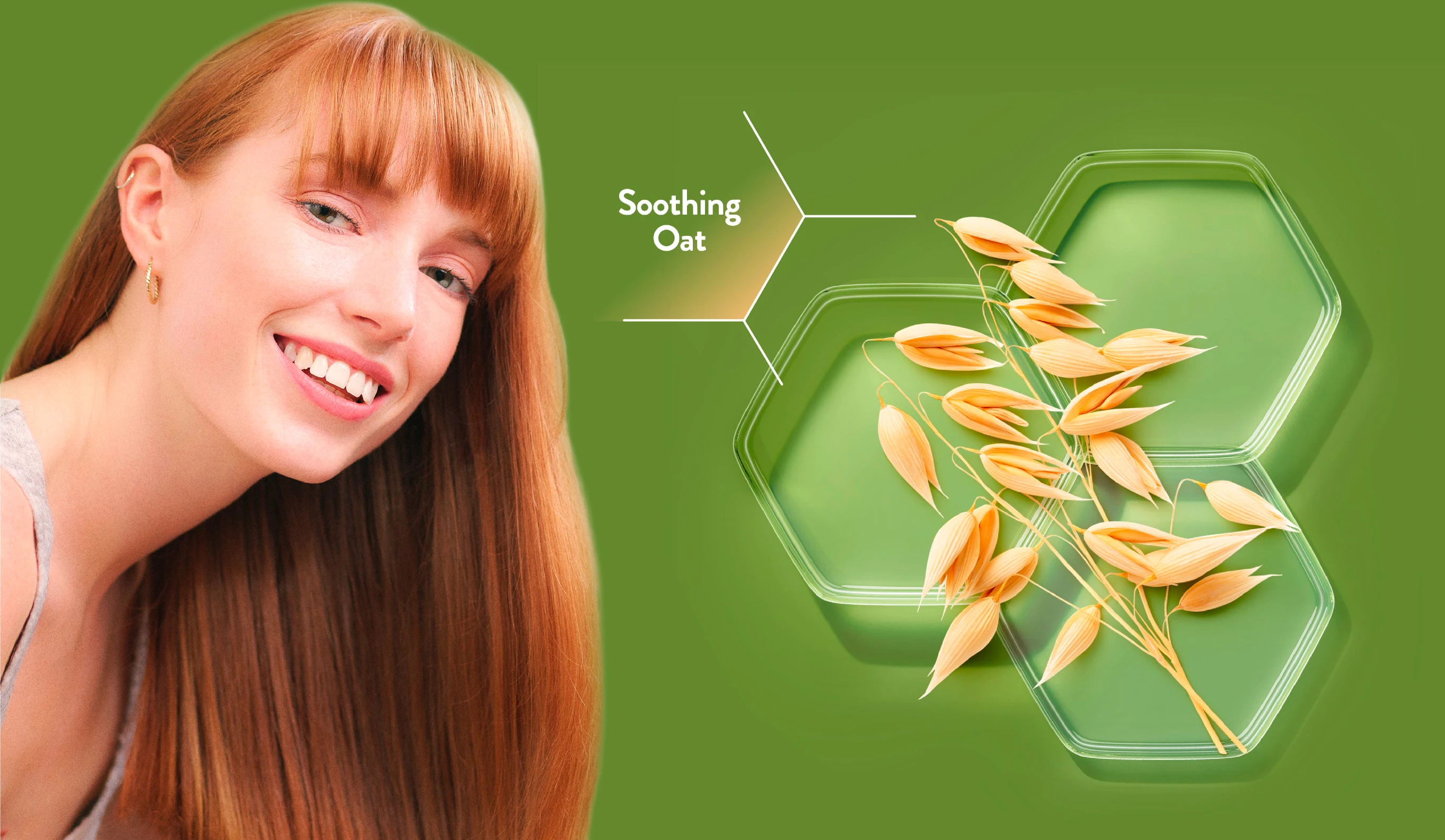Key takeaways:
When used in skincare products, prebiotics can help to balance the good and bad bacteria on your skin
Prebiotic containing skin creams can improve the condition of dry, itchy skin and spot-prone skin
Prebiotics and probiotics can be applied topically, or ingested via food supplements
Probiotics, prebiotics and skincare
Looking after your skin is important. After all, it’s the largest organ in your body and works incredibly hard to help keep you happy and healthy, protecting you from the sun’s dangerous rays and ensuring any bad bacteria are kept out and vital moisture kept in.
Of course, not all the bacteria your skin is exposed to is harmful. Just like your gut, your skin is home to hundreds of varieties of bacteria, along with other microorganisms, many of which can be classed as helpful or “good” and which form the skin microbiome. These bacteria contribute to a healthy complexion, working together in perfect balance to ensure a functioning ecosystem on and in your skin.
To ensure your skin is in peak condition respect the skin pH, and maintain and nurture the balance of the microbiome. There are several ways to do this, most of which centre around the skincare products you use and the foods you eat. The ingredients within these products and foods matter, so it’s important to be aware of what goes into your body, as well as what goes on it.
Probiotics are live microorganisms that are intended to have health benefits when consumed or applied to the body. Probiotic foods can be beneficial to skin, as well as digestive health. Probiotics are most commonly found in supplements you can buy in a health food store or supermarket, as well as naturally occurring in foods that contain live bacteria, such as cheese and yoghurts. Creams and serums containing probiotics may help to introduce beneficial bacteria and their by-products to the skin. These products can help to soothe and strengthen the skin’s barrier.
Prebiotics are non-living ingredients that are used to support the growth, survival and balance of bacteria on your skin - helping to keep your skin microbiome healthy.
Learn more about the benefits of probiotics and prebiotics, as well as how to bring these into your everyday skincare routine, including:
What are probiotics and prebiotics?
Although they sound pretty similar, probiotics and prebiotics are two vastly different things with specific functions. Probiotics are living microorganisms that are found both naturally in your body and in food and supplements. When consumed or applied to the skin, they provide a wealth of positive benefits for the body, including:
Promoting good gut health
Strengthening skin overall
Prebiotics on the other hand aren’t actually alive. They are non-digestible ingredients that help to nourish the good bacteria in your gut or on your skin and balance the microbiome .
When probiotics and prebiotics are combined, whether that be in skin cream or in foods, they join forces to become what’s known as a synbiotic. Common synbiotics include supplements, additives and certain foods like yoghurt and cheese.
Here’s a closer look at the differences between the two:
Probiotics
Probiotics consist of different groups of live bacteria and microorganisms that live both in the body and on the skin’s surface.
There are two main categories of probiotics:
Lactobacillus – considered “friendly bacteria”, commonly found in the human digestive system and in probiotic foods. Several different species exist and can contribute towards treating IBS, digestion problems and skin disorders like acne and eczema when consumed.
Bifidobacterium – groups of bacteria that reside within the intestines and can also be cultured outside of the body for use in probiotic yoghurts. They are frequently used to treat diarrhoea, intestinal disorders and IBS when consumed in food or supplement form.
Individual strains have different effects on the body, which means that by eating the right foods rich in probiotics, or applying a likewise solution, bacteria can contribute positively to both your gut and skin health.
Prebiotics
Prebiotics are made up of plant-based carbohydrates that are used as fuel for beneficial probiotic bacteria growth. They can’t be digested by humans, however their role is to positively change or preserve the healthy microbiome found in the gut, or on the skin, when eaten or applied.
Ingredients found in products that are high in prebiotics include:
Colloidal Oat – Colloidal oat is used to help moisturise and soothe dry, itchy skin, and has been shown to help improve the balance of the skin’s microbiome.
Blackcurrant – increasingly found in food supplements, the extract powder from blackcurrants can increase the amount of bifidobacteria and lactobacilli found in the gut. This can contribute to good overall digestive health.
Using probiotics and prebiotics for dry, itchy skin and spot-prone skin
Using products containing probiotics and/or prebiotics can have a positive effect on the gut or skin microbiome, which in turn can positively impact the health of these organs. Both skincare products and foods that contain probiotics can be used to help manage a variety of skin conditions, including:
Acne – A study has shown that a topical product containing the probiotic Lactobacillus plantarum can help reduce acne lesions and repair the skin barrier of those suffering from acne.
Eczema – Scientific reviews have suggested that probiotic supplements, taken by mouth, can reduce the severity of those suffering from mild to severe eczema.
Psoriasis – Recent research has illustrated that certain strains of probiotic lactobacillus can help reduce skin inflammation, showing promising signs that probiotics can control the effects of psoriasis.
Oral ingestion vs skin application
Probiotics and prebiotics can be either orally ingested in the form of foods or probiotic tablets, delivering healthy bacteria directly to the gut, or applied directly to the skin’s surface through cosmetic creams like moisturisers and serums.
Oral ingestion of Probiotics and Prebiotics
As many healthy bacteria and microorganisms occur naturally in our gut, using probiotics to improve your digestive health has been an area that scientists and researchers have been increasingly interested in.
To have a long-term, beneficial impact, foods rich in probiotics, like cheese and yoghurt, as well as prebiotic foods such as under-ripe bananas, onions and asparagus, must be eaten regularly to continually supply the body with fresh bacteria. This is necessary to replace the probiotics that have been broken down while reaching the gut.
Skin application of Probiotics and Prebiotics
Applying a topical probiotic cream or serum to your skin can help to address the balance of healthy bacteria that make up your skin microbiome. The probiotics within these creams can help reduce the pH of skin, slightly acidifying the surface, to help reduce the growth of bad bacteria and promoting the thriving of healthy bacteria on the skin.
Prebiotic skin creams may also be hugely beneficial. They can help preserve the existing healthy bacteria on your skin when applied and encourage the growth and survival of probiotic microorganisms already in your skin microbiome. By helping to maintain a balanced healthy microbiome, such products help maintain the integrity of the skin barrier for healthier-looking skin.
Both probiotics and prebiotics can play a major part in achieving a healthy complexion, as well as managing dry, itchy skin. Give them a try by adding them to your daily skin routine, as well as your everyday diet.

